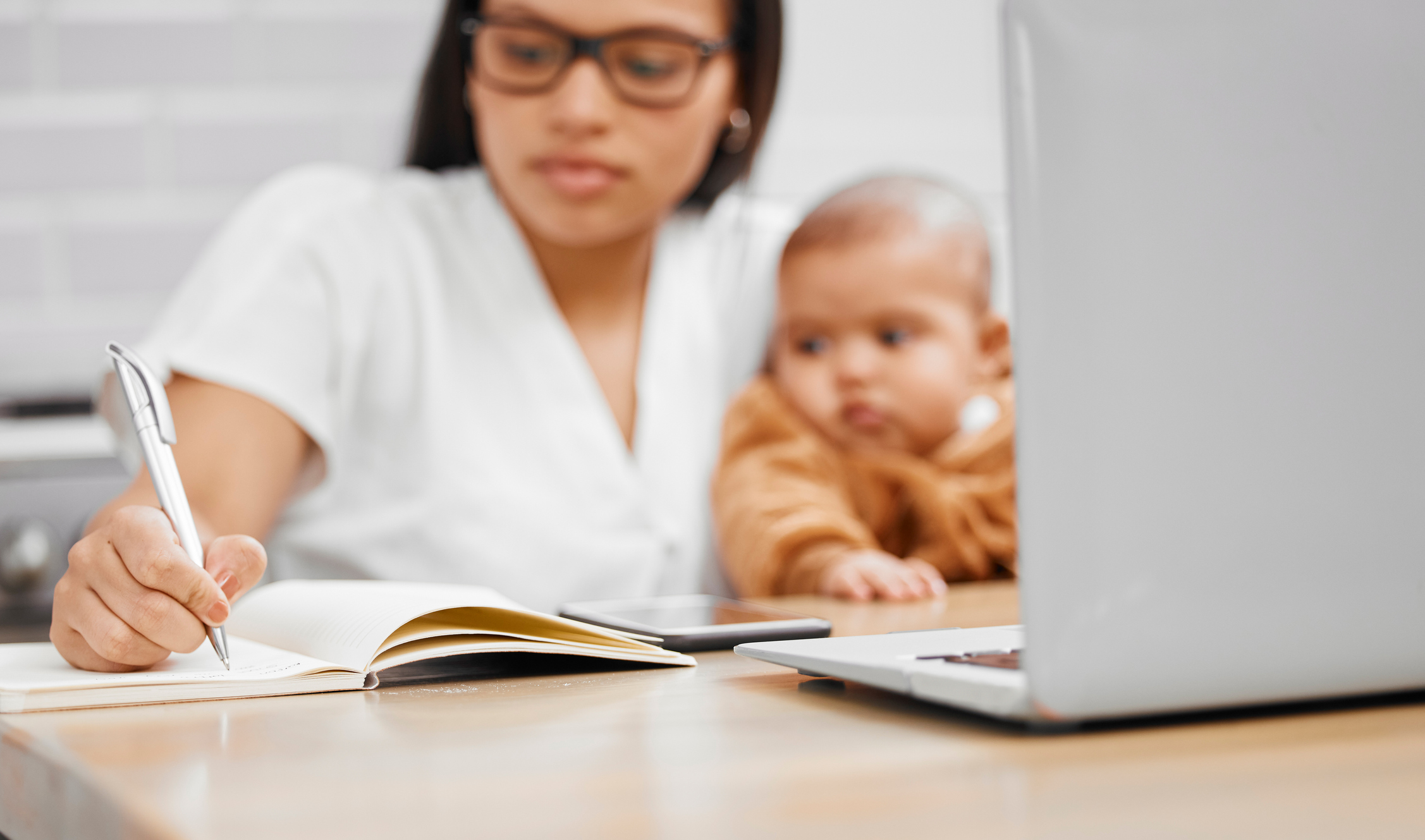
Some seasons of life seem more overwhelming than others. As a mom, managing work and family — on top of remembering to take care of yourself — can feel demanding. Trying to do it all is tiring. But we know productivity is imperative for success. So how do we balance it all? How do we get done what we need to, while also maintaining our health, sanity, and relationships?
The key is to find out what productivity looks like for you. You may choose a digital planner instead of a paper planner. You might work best in absolute silence or enjoy listening to music.
Here, we're sharing some productivity tips and hacks, but remember, a productivity hack doesn’t work if it doesn’t offer a long-term solution! There are many methods and systems to help you be productive. Find what works best for you. Productivity looks different for everyone.
Go Into the Week Strong
Taking part of the weekend to plan for the week ahead can make a tremendous difference in productivity. Meal plan, set reminders, or simply familiarize yourself with the week’s activities. Meal planning helps because when you’re picking up kids from practice or rushing to finish a deadline, dinner is one less thing to think about.
The week may change, but pre-planning helps outline the big things. Productivity doesn’t have to mean getting a lot of work done. Sometimes it means being aware of what you need to do.
Break Down the Day

You may have heard of techniques like time-blocking or the Pomodoro method. Making a daily breakdown helps do just that. Break your day up into manageable chunks. Start by breaking up a day into morning, afternoon, or evening. Look at the day in time blocks rather than specific hours.
Determine Must-Dos & Can-Dos
Many people think about to-do lists and become even more stressed out. You do not need to get everything done at once. That’s not effective or productive! Have you broken down your to-do list? Do you need to do everything right now? Likely, you don’t.
Determine must-dos and can-dos. Look at the long list stressing you out and pick a few things to do immediately. Then look at the rest. Sprinkle them into your schedule for later that day, week, or even month.
Pick a Workspace

Maybe your workspace is an organized office with a closed door. Or maybe it’s the dining room table after dinner. Either way, you need a designated workspace. You need all your things in one spot. Then you can spend less time looking for your laptop or planner, and more time sitting down to actually accomplish your work.
Take Breaks
This concept may be easy for some people, and more difficult for others. But people who push aside rest or never step away from their work burn out quickly. Consider your day, your week, your month. Are you resting, or moving your body? Are you remembering to stop and eat?
Allowing our brains and our bodies time away from our work gives us room to recharge. This helps productivity in the long run. What you choose to do in terms of a break can vary, but an effective break allows you to return to your work rejuvenated.
Set Boundaries

Then actually follow them. Setting boundaries is important. Juggling work and family can create a lot of blurred lines. Set clear rules for when you are working.
Use visual boundaries, such as a closed door or sign. You can also use the Focus setting on your iPhone to mute calls or notifications, as well as customize your screen time allowance on your phone or computer. Set alarms to break your work time into concrete beginnings and endings. Apps, timers, and clocks all give you boundaries and resources to be productive.
Delegate
Sharing the responsibilities helps. Delegating tasks can change based on the season, home life, or current workload. Delegate tasks at work or home by using open and constant communication.
Besides delegating work to people, consider delegating work to specific days. Think about your schedule. What needs to go where? What can you move around, versus what’s not flexible? Assigning tasks to both people and days helps lighten the load of one person.
Reduce Distractions

No matter where you go, there will be things to distract you. The house is noisy. The office is busy. Your kids are loud. Do what you can to reduce distractions. Buy noise-canceling headphones. Go to a coffee shop or library for a few hours to work. Hire child care. Be intentional and effective in reducing distractions.
Use Collaborative Workspaces
Make a Daily Top 3

Much like breaking down your to-do list, making a daily top three helps focus productively on what needs to be done that day. If you have a busy week or day, pick three things daily you have to get done. Then write them down. Focus on getting those three things done that day only. And only those three things.



